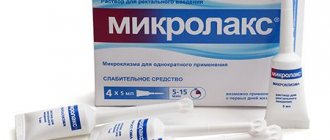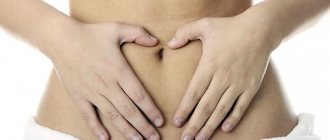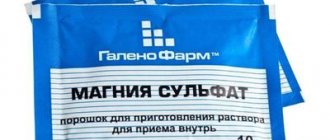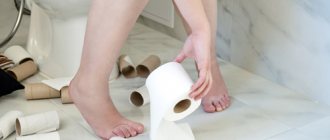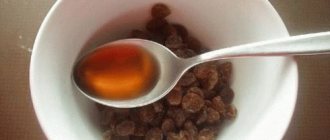What is an enema and what can it be?
What exactly is an enema? An enema is a medical procedure that involves injecting a liquid (water or medication) into the rectum.
I distinguish several types of enemas, depending on their purpose:
- Cleansing. Indicated for constipation, bloating, food poisoning, and for emptying the intestines of stool and gases. Performed using chilled boiled water.
It is very important that the water is exactly 24 - 26 ° C (room temperature). If you use hot water, you can cause a burn to the intestinal mucosa. Also, hot water dilates blood vessels and is well absorbed into the bloodstream, and the rectum is very well supplied with blood. Entering the bloodstream, water will pull with it all the toxins accumulated in the stool. “Fecal intoxication” may occur. The most terrible condition that can develop with this complication is cerebral edema.Therefore, before performing an enema, always consult a doctor, or even better, entrust the procedure to specialists.
- Laxative. Vaseline oil or glycerin is injected into the rectum with an enema. You can dilute them with a small amount of saline solution. This enema for an infant is indicated for constipation, especially when the baby has a dense consistency of stool. The oil solution softens the stool and helps the intestines empty.
- Hypertensive. The enema bulb is filled with a hypertonic solution (2.5%, 5% or 10%) of table salt.
This type of enema cleanses the intestines very well during prolonged constipation and is most often performed in a hospital setting by medical workers. The salty solution draws out the intestinal contents well. If you decide to prepare a hypertonic solution at home using water and salt, you must mix the solution thoroughly! Undissolved salt crystals can cause damage to your baby's intestinal lining. It is also necessary to observe the temperature regime of the solution. - Siphon. Such an enema is performed only in a hospital setting and is a purely medical procedure. A large volume of solution causes high intestinal lavage. Indicated for poisoning or fecal “blockages”.
- Medicinal enema. This is a method of administering a drug. Performed as prescribed by a doctor.
How to prepare the solution correctly
Constipation in babies
Is it possible to give an enema to a newborn - a question that worries many mothers and fathers. Yes, you can. This method, however, is in some way a “last resort”. In the event that non-drug methods such as massage and gymnastics do not cope. When glycerin suppositories and lactulose syrup do not help.
Enema for newborns for constipation at home - is it possible? I guess, yes. But the following rules must be observed:
- carry out manipulations only as directed by a doctor;
- can be carried out only after detailed instructions on how to properly give an enema to a newborn;
- The procedure technology must be strictly followed, the infusion volumes must be measured, and the required water temperature must be achieved;
- If the slightest complications occur, or if there is no effect, an early consultation with a pediatrician is required.
In what cases is an enema for a baby with constipation contraindicated? The first and absolute contraindication is the lack of a doctor’s prescription. In addition, the procedure cannot be performed in the following situations:
- intestinal malformations;
- inflammatory diseases of the rectal mucosa, anal area;
- proctocolitis of allergic origin;
- neoplasms of the anal area and intestines;
- the presence of blood in the stool (during a previous bowel movement);
- rectal prolapse;
- clinic of “acute abdomen” - sharp pain (manifested by continuous screaming, pulling the legs towards the stomach), bloating, increased body temperature, vomiting.
Frequency
- once for the first time when constipation occurs while waiting for a consultation with a pediatrician;
- no more than once every 3-4 days for a maximum of two weeks until the cause of constipation is determined.
The fact is that this drug has no effect on the factor that provokes stool retention. An enema for newborns for constipation only dilutes the stool and facilitates its easy passage through the intestines. This means that feces are excreted only by changing its consistency. At the same time, there is no work of the intestinal muscles and anal sphincter.
Drawing a conclusion based on all of the above, it is worth noting that the most important thing is to follow the doctor’s instructions. It is very easy to harm a baby. It is dangerous to invade the body of babies, because everything about them is very small, sensitive and unprotected. And even an insignificant mistake, in the eyes of an adult, can cause quite serious complications.
Please note that some other varieties can also be used:
- Hypertensive microenemas are used to provoke independent cleansing of intestinal receptors. To prepare it, a strong saline solution is used, for example, with the most common salt.
- An oil microenema that has a relaxing effect on the walls and muscle structure of the intestines. To combat constipation, the oil should be warm. In this case, olive or sunflower oil is used, or pharmaceutical vaseline can be used.
- Microlax is another type of enema for a child with constipation, which is a viscous solution of sodium citrate, sorbitol solution and other components. The advantage of the product is that it is not addictive and has a positive effect on the child’s body.
In childhood, a cleansing enema is most often performed. How to do this will be discussed below.
The tip of the enema itself is lubricated with oil or Vaseline. Further note that:
- immediately before filling the pear with water, it is squeezed by hand until all air masses are displaced;
- then the tip is placed in water, the balloon is unclenched and the required amount of water is filled into it;
- the enema is carried out in a horizontal position, namely on the left side;
- it is important that the legs are bent at the knee joints;
- with the right hand, insert the tip of the bulb into the rectal area as carefully as possible, using light rotational movements for this;
- if the tip is short and soft, it will need to be inserted completely, but if it is long and plastic, then to a depth of no more than five cm.
The same is true when giving an enema to a 3-year-old child with constipation. Next, by slowly squeezing the balloon, water is injected into the intestinal area. After this, without unclenching it, the enema is removed from the rectum.
https://www.youtube.com/watch?v=efKK8QSMam8
Next, you will need to lightly squeeze the baby’s buttocks for one or two minutes. This will allow for elimination or slower pouring of water. If all instructions for action are carried out correctly and in the proper order, then after a certain period of time 100% bowel movement will occur. After this procedure, it is recommended to wash the child.
A cleansing enema can be carried out using a variety of compositions. For example, a solution of table or sea salt (for 200 ml of water - half a teaspoon of salt) or a soda solution (for 200 ml of water - one teaspoon of soda). It is also quite possible to use a mixture of ordinary water with vegetable oil or, for example, glycerin (two to three tablespoons per liter of water) or a decoction prepared on the basis of medicinal chamomile (one tablespoon of dried chamomile per 200 ml of water).
Only after consultation with a specialist, it is permissible to use a soap solution. In this case, dissolve a small piece of baby soap in the required amount of water until foam appears.
Enemas are given to children with 4 types of solution:
- A cleansing enema for children washes the area of the colon and frees it from masses of stagnant feces, eliminating constipation;
- Oil – quickly eliminates symptoms of constipation, suitable for newborns;
- Medicinal – ensures rapid absorption of the drug through the walls of the large intestine;
- Siphon - such an enema is used to cleanse the rectum of the accumulation of feces through repeated infusions of the solution.
Please note how to properly prepare cleaning solutions at home.
The main purpose of a cleansing enema is to free the intestines from feces and waste formations. Read the instructions on how to give an enema to your child. Study the recipes for basic solutions used for enema:
- Hypertonic – eliminates toxic substances and waste. For constipation, this type of fluid is given to the child. To prepare, take 220 ml of water, add 1/2 teaspoon of table salt and boil. Use only when the solution reaches the desired temperature, that is, cools down. For a child from 0 to 2 months, the concentration of the hypertonic solution is halved. To do this, reduce the mass of salt by half.
- Chamomile decoction is used both as a cleansing enema and an antipyretic. To prepare the decoction, take 1 tbsp. spoon of flowers, pour 250 ml of just boiled water and leave for 1 hour. Then filter and bring to the desired temperature. In a cleansing enema, you can mix chamomile decoction and a hypertonic solution to achieve a laxative and disinfecting effect. At the same time, salt and chamomile are added to such a solution. The salt must first be boiled.
- Oil enema – has a laxative effect. Use olive or sunflower oil. To disinfect, the oil should be boiled for about 20 minutes using a water bath. Then cool; the temperature cannot exceed 39 0C when using.
Any solution filled with an enema helps cleanse the intestines.
Is it advisable to give your baby an enema to bring down the temperature? The answer is definitely yes - in this condition the child can have an enema. It is better to choose a solution made from chamomile decoction. It is necessary to make the temperature of the liquid 1 degree lower than body temperature.
You can give medicinal enemas only when medicinal methods of reducing the temperature have been exhausted. Analgin solution is prepared by mixing 50 ml of water with 1 ml of analgin. Without consulting a doctor, you can give an enema with analgin only 1 time, when traditional medications have not helped.
Garlic enema is a dubious option for getting rid of worms. Many parents are interested in how to give their child an enema that can expel parasites. This method is effective in the case of enterobiasis; it clears worms only in the lower parts of the intestine, when the parasites descend there to lay eggs.
Garlic liquid is prepared by brewing 4 or 6 cloves of garlic, which should be cut lengthwise and boiled in 250 ml of water or milk. Milk has enveloping properties, therefore it protects the intestinal mucosa.
To completely cleanse the intestines, you must repeat the procedure daily for 2 weeks. Think about whether the baby can endure a series of similar bullying.
- Less than three bowel movements per week;
- The act of defecation causes pain;
- The feces themselves are hard and dry;
- The poop is large in diameter, making it difficult to empty the bowels;
- Abdominal pain;
- There may be traces of blood in the stool.
Here are the factors that contribute to constipation:
- Retention of stool by a child, or as it is also called “psychological constipation”;
- There are not enough fiber-rich foods in the child’s diet;
- A common occurrence for babies under one year of age is the transition from liquid food (milk or formula) to solid food;
- Insufficient water intake;
- Changes in environmental conditions, such as extreme heat or stress, can affect bowel function (read the article about the main causes of constipation in a newborn);
- The use of certain medications can cause constipation (For example, for jaundice in a newborn, doctors often prescribe Ursofalk. The drug copes with its task very well, but its frequent side effect is constipation in the baby).
- A diet high in fiber and with plenty of fluids (You can see an approximate 7-day meal plan for constipation in the article). This means that your child should eat plenty of fruits and vegetables, cereals, whole grain bread, foods containing probiotics and, of course, drink plenty of fluids.
- Anti-constipation medications are designed to soften stool and make defecation easier. Your pediatrician should prescribe it; do not self-medicate.
- Introduce the rule of going to the toilet at the same time every day. For example, in the morning, after waking up.
- Preparing for an enema
- Types of enemas for children
- Giving an enema to a baby
- The harm and benefits of an enema
What volume of cleansing enema does a child need?
In addition to the temperature regime, you need to know how much solution can be administered to the baby. When administering a cleansing enema, the amount of fluid administered directly depends on the age of the child. The younger the baby, the less solution is needed to empty the intestines. There are standards for the volumes permissible for performing an enema on a child.
| Up to two months | 30 ml |
| 2 – 4 months | 60 ml |
| 6 -9 months | 70 – 100 ml |
| 9 – 12 months | 120 – 170 ml |
| 1 – 2 years | 200 – 250 ml |
| 25 years | 300 ml |
| 6 – 10 years | 400 – 500 ml |
What is needed to perform a cleansing enema?
- First of all, you need to prepare the place for the procedure.
- On a flat surface (changing table or crib), you need to lay an oilcloth and put a clean diaper or sheet on top of it.
- To perform an enema for a child under 4-5 years old, use a syringe. A syringe is a pear-shaped rubber canister with a rubber or plastic tip. There are different volumes of “pears” - from 30 ml, for the smallest children, to 360 ml. You can buy a syringe at any pharmacy; its cost is on average 100 rubles. For children over 4 years old, an Esmarch mug is required to perform an enema. This is a rubber cylinder with a volume of 2 liters, from which comes a silicone tube with a removable plastic tip. The cost of such a system in pharmacies is 200 - 500 rubles.
- Before performing an enema, you should prepare an enema solution, petroleum jelly or baby cream. For children older than one year, it is necessary to prepare a potty in advance.
How to perform a cleansing enema on a baby?
- First of all, before giving an enema to a baby, you need to prepare everything you need so as not to be distracted during the procedure.
- Before performing an enema, you should wash your hands.
- The syringe is boiled for about 30 minutes. Then we wait until it cools down.
- We squeeze the can to release the air, then slowly unclench it and draw in the required amount of solution.
- The tip of the bulb is lubricated with Vaseline, vegetable oil or baby cream to reduce the risk of intestinal trauma.
- The baby lies on his back, his legs are pressed against each other and raised slightly upward. Children older than one year can be placed on their left side, pressing their knees to their stomach.
- We spread the buttocks with our fingers and carefully insert the tip into the rectum to a depth of 2 - 4 cm.
- Slowly squeezing the bulb, we introduce liquid into the intestine.
- Carefully remove the tip and squeeze the buttocks for a few minutes.
- After defecation, we wash the baby, and thoroughly wash and dry the syringe.
Types of enemas and their administration
Disturbances in the intestines can be caused by pathological abnormalities, congenital anomalies of the colon or Hirschsprung's disease, which can only be cured by surgery. Often, disorders are caused by poor nutrition of children, unstable diet or poor nutrition of the nursing mother.
If a child often experiences constipation, in order for his diet to be adjusted, it is necessary to introduce more raw vegetables and fruits into the diet, and also exclude viscous and sweet foods from the diet. If this does not help, parents need to learn how to give an enema to their newborn baby.
There are several types of enemas depending on the purpose:
- cleansing,
- medicinal,
- oil,
- siphon enema.
Cleansing enema: prescribed to cleanse the intestines for constipation, poisoning and before another. The result can be seen in a few minutes. This simple procedure will bring great relief to your baby.
Prepare water slightly cooler than room temperature; if it is warm, it will be quickly absorbed by the intestines; cold water may cause spasms. We place the child on his left side or back, then slowly introduce the liquid. The tube must be removed carefully. Squeeze your buttocks together and wait a little.
Medicinal enema: to this type, medications, herbs and infusions are added. It is placed after the cleansing procedure 30 minutes later. The formulation is no different from the usual one, except that the volume is smaller and the temperature is higher, for rapid absorption by the body.
Oil enema: if inflammation is detected in the intestines, the doctor will prescribe one. It acts as a mild laxative for constipation. Prescribed oil: hemp, petroleum jelly, and sometimes sunflower. It should be heated to 37°C. Results appear in 8-9 hours.
Siphon enema: it is stationary, because It is given to a child only in case of serious poisoning of the body with poisons.
Performing a cleansing enema for children over 4 years of age
- To perform the procedure, we use Esmarch's mug.
- The solution is poured into a rubber container. The volume depends on the age of the child. We also make sure to observe the temperature regime.
- We release a small amount of the contents of the pear to displace the air from the tube.
- The balloon should be fixed 1 meter above the level of the lying child to ensure a downward flow of fluid.
- We connect the tip to the system, lubricate it with Vaseline or vegetable oil. Plastic tips can be disposable. Then we take it out of the sterile packaging and throw it away after the procedure. If the tip is reusable, it must be boiled before use.
- The child lies on his left side with his knees tucked to his stomach.
- The tip is carefully inserted into the rectum 2 cm towards the abdomen, and then 2 - 4 cm posteriorly, towards the tailbone.
- The clamp on the tube opens and the solution enters the intestines.
- The tip is removed, and the child must lie down for another 10 minutes until the unbearable desire to defecate.
- Then the child is seated on the potty or toilet to have a bowel movement.
In addition to cleansing with liquid, an enema has an irritating effect that stimulates intestinal motility, which helps with bowel movements. But stool does not always come out after an enema. It is necessary to ensure that all the liquid introduced into the intestines comes out. Sometimes emptying does not occur immediately, but after 30 - 50 minutes.
A correctly performed procedure is harmless and alleviates the baby’s condition. If you are not confident in yourself, you should not undertake manipulation. Contact your pediatrician who will examine your child and help with performing an enema.
kroha.info
Staging algorithm
Originally Answered: How to give an enema to a newborn with constipation? Not difficult. The main thing is to study the following rules:
- Choose an enema with a soft tip and remember to be careful when inserting.
- Before the procedure, wash your hands and boil the elements for 5 minutes.
- Nothing other than lukewarm water should be used as a solution, unless otherwise prescribed by a doctor.
- Before the procedure, check the temperature of the liquid used.
- Try not to make sudden movements, as this may frighten the child.
- After the procedure, the child should not move actively.
- Monitor the completion of the process and give your baby warm, sweet tea.
For newborns can be used:
- cylinder No. 1,
- for children in the first months of life - No. 2,
- after six months - No. 3,
- for a one-year-old child - No. 4 or No. 5.
The water must be boiled, the water temperature is 28 - 30 ° C.
The amount of water for children in the first half of the year is no more than 1/4 cup, after 6 months. - no more than 1/2 cup, for a one-year-old 3/4 or 1 cup.
Setting up an enema:
On the table, changing table or couch, you must first spread an oilcloth, and on top of it - a warm diaper (flannelette); Fill a rubber balloon of a suitable container with liquid (boiled water, or isotonic solution, or infusion, decoction), lubricate the tip of the balloon with petroleum jelly.
So, to give an enema to a newborn, place him on a diaper face up, lift his legs with your left hand (an assistant can do this), take the prepared balloon with your right hand and insert its tip into the anus to a depth of several centimeters - but not more than 4 cm. Slowly begin introducing fluid into the rectum, while carefully monitoring the baby’s reaction; If the baby reacts to the procedure as painful, it should be stopped, pull the balloon slightly towards you, slightly change the direction of the tip of the balloon, and only then continue the procedure. When all the liquid has been introduced, the tip of the balloon should be slowly removed from the rectum; the balloon is kept in a compressed state.
With your free hand, you need to lightly press the buttocks together so that the liquid administered through the enema does not immediately pour out of the intestines. The baby should lie quietly on his back for several minutes; At this time, the mother can lightly massage his stomach - make stroking movements in the direction of the clock. It won’t take long for your baby to have a bowel movement. After the feces pass into the diaper, they should be removed along with the diaper, the baby should be washed, his skin should be dried, and swaddled (or dressed). As you can see, nothing complicated.
A cleansing enema is not given to a newborn if he has:
- suspicion of appendicitis,
- stomach or intestinal bleeding,
- rectal fissures, etc.
Children of different ages need different amounts of fluid. So, for a baby of the first year of life, from 30 to 100 ml of liquid is administered, for babies aged from one to five years, 150-300 ml of liquid is enough for the procedure, over five years, approximately 500 ml of liquid is required. You can give an enema to a newborn using special rubber balloons; standard cylinder No. 1 has a capacity of 30 ml, cylinder No. 2 - 60 ml, etc. increasingly.
Indications for use and contraindications
A cleansing enema should be performed only in the following cases:
- the occurrence of an inflammatory process in the gastrointestinal tract;
- increased gas formation;
- before administering medications into the rectum;
- suffer from constipation;
- if in the future it is necessary to perform an enema for therapeutic purposes;
- if it is followed by the introduction of a gas outlet tube;
- before surgery;
- before an instrumental examination.
In no case should an enema be used if the child has inflammatory processes in the perineal or anal area, bleeding in the gastrointestinal tract or rectal tumor (oncology), rectal prolapse or suspicion of the need for quick and unplanned surgery interventions.
Contraindications
You cannot perform an enema yourself in the following cases:
- Rectal prolapse.
- If constipation is accompanied by bleeding, discharge of pus or bad-smelling mucus.
- Inflammation in the intestines. At home, inflammatory processes can be determined by an increase in local temperature in the inflamed area or by the presence of a so-called inflammatory temperature, which throughout the day stays in the range of 37.2-37.8 and is not reduced by antipyretics.
- Cutting in the abdomen, especially in the lower right part. If the child does not yet know how to speak, he will cry and put his hands on his tummy.
Regardless of the nature of its occurrence, constipation is an unpleasant, painful process. Very often, an enema at home for constipation is the only way to get rid of suffering. In no case can this medical procedure be the only method of treating chronic constipation; its use can only be done in conjunction with other traditional therapy.
Such a simple manipulation as an enema can raise a lot of questions. Is it always possible to give an enema to everyone? What contraindications to enemas exist? How to carry out the procedure correctly so as not to cause harm? Is it possible to give an enema at home? What types of enemas are there?
What's useful
In order to give an enema to a small child, you need to prepare everything you need in advance:
- rubber pear or Esmarch mug;
- boiled water at a certain temperature (for children under one year old - 28-30 degrees, and for older children a temperature of 22-24 degrees is sufficient). If you take cold water, an intestinal spasm will certainly occur; warmer water can cause burn damage to the walls;
- medical gloves, oilcloth, diaper and towel;
- antiseptic hand cleanser or baby soap;
- Vaseline oil or Vaseline;
- children's potty.
Enema using a rubber bulb
The algorithm for administering a cleansing enema to a child must go through the following stages:
- spread a diaper or sheet on top of oilcloth on a couch, changing table or other horizontal surface, and also prepare a towel;
- Wash your hands thoroughly with an antiseptic, dry and put on gloves;
- release the air from the rubber bulb, then lower its tip into the prepared water and fill it;
- lubricate the tip of the bulb with Vaseline oil, which will facilitate its more careful and gentle insertion into the anus;
- place the child in a comfortable position. If he is under one year of age, the best position is to lie on his back with his legs raised strongly up. Older children should be placed on their left side with their legs bent at the knee joints and brought close to the stomach;
- Slightly spread the child’s buttocks with your fingers to make it easier to administer the enema, carefully insert the tip of the bulb into the anus with rotational movements: immediately towards the navel, and then towards the spine. If the tip is small, then it is inserted completely, but if it is large, then it should be immersed no more than 5 cm;
- Squeeze the lower part of the pear with slow movements until the fluid is completely introduced into the body;
- take out the rubber bulb, put it aside and, tightly squeezing the child’s buttocks, hold him in this position for 5-7 minutes, then turn the baby on his back and wait for the urge to have a bowel movement.
How to properly administer an enema bulb to children
The principle of an enema is to inject water or a medicinal solution into the rectum through the anus. The injected fluid is designed to be erupted rather than sucked in, so its temperature must be monitored. For children of different ages, the procedure algorithm is almost the same, but you need to know the preparation recipes and the norms for the volume of injected solution.
Giving a microenema to an infant
Ideally, a district nurse should administer an enema to a newborn baby. But the realities of life can be harsh, and a young mother often has to do this procedure on her own at home. Here is the algorithm that health workers themselves recommend to adhere to:
- Boil the water in advance and cool it to about 30° (it cannot be warmer, otherwise it will be absorbed along with dissolved feces through the intestinal walls into the body).
- Sterilize a 30 ml enema syringe with a soft tip (type A) (No. 1 according to the Russian system of standards) in a pan of boiling water.
- Cover the changing table or sofa with oilcloth and a soft diaper, place a baby blanket next to it to cover the baby after the enema is administered.
- Prepare the solution. Make sure the bulb is cool, squeeze it with your palm, and dip the tip into the liquid to fill it.
- Remove the baby's diaper. Talking gently and soothingly, lay him on his back.
- Lubricate the tip with Vaseline or boiled vegetable oil first, and then the anus.
- Lift your baby's legs up and press them lightly against the tummy. Carefully, without the slightest effort, insert the enema into the rectum to a maximum of 3–4 cm.
- Gently squeeze the bulb, squeeze its contents inward and, without unclenching the tool, remove it.
- Keep the baby in the same position for another 10 minutes so that the water does not spill out. Then put on a diaper, dress or cover the baby, and after 15–20 minutes, check the effectiveness of your procedure.
Once the goal is achieved, wash the baby and lubricate his bottom with diaper rash prevention products.
Ambulance at home for children over one year old
To give an enema to an older child, you must first determine the exact dose of fluid administered. The recommended amount cannot be changed: too small a volume will not help soften hardened feces, and a large volume will cause pain.
The procedure for carrying out the procedure using a pear-shaped enema does not differ from the previous one, except that the child needs to be placed on his left side. It is recommended that he remain in a horizontal position for about half an hour, so turn on cartoons in advance or read a book during this time.
Starting from the age of 3, when the amount of liquid reaches 300 ml, it is better to use an Esmarch mug instead of a syringe bulb. It is a rubber or silicone bag (previously a metal mug was used instead, hence the name of the device), connected to a one and a half meter tube.
Despite the fact that the container has a volume of 1–2 liters, thanks to the applied graduation it will not be difficult for you to accurately measure the required value. The convenience of using an enema mug lies in the possibility of smooth introduction of the solution and eliminating the risk of spilling. You need to install the device like this:
- The child lies on his left side and draws his legs towards him.
- Pour room (20–22°) boiled water into Esmarch’s mug and hang it at a height of 50–70 cm from the level of the child’s head.
- Open the water flow control valve and make sure that the tube is filled with liquid, and then turn it off.
- Lubricate the pre-disinfected rubber tip with Vaseline and carefully insert it into the anus - first forward to the navel, and then back to the tailbone, to a depth of 5-7 cm.
- Open the tap again and allow the contents of the container to flow into the intestines.
After completing the administration of the medicinal composition, carefully pull out the tip. Let the child lie down until the urge to defecate appears.
Enema using Esmarch's mug
If it is necessary to cleanse the intestines using an Esmarch mug, you must follow the placement technique.
- For the procedure, you will need a one and a half meter tube with a centimeter diameter and a tip of about 10 cm, as well as a sealed Esmarch mug.
- The first step is to turn off the tap at the end of the tube and fill the container with water. The liquid requirements are the same as when administering an enema using a rubber bulb.
- Open the tap, drain the water into the tray, and then fill the tube, carefully displacing the air there.
- Before inserting the tip of the tube from Esmarch's mug into the anus, it is necessary to lubricate it with Vaseline.
- Give the child’s body the necessary comfortable position (as when using a pear).
- Insert the tip slowly and carefully, trying to avoid possible damage, into the anus in the same order as with a rubber bulb enema.
- Place Esmarch's mug at a height of about 1 meter from the child.
- Open the tap and ensure a slow, even flow of fluid into the body. If administered quickly, the child will have a sudden bowel movement, which will not give the desired effect.
- 10 minutes after you remove the tip, the child can go to the toilet.
Prescribing colonic lavage procedures
- Medical purpose. This enema is prescribed according to indications: before surgery, childbirth, to cleanse the intestines during constipation, reduce temperature, increase immunity, and treat dysbacteriosis. That is, with the help of this manipulation, medicinal or homeopathic preparations are introduced.
- Erotic purpose. Obtaining sexual satisfaction is achieved through the administration of an enema or its contents.
- Psychotropic prescription. Alcohol, soft drugs, and aphrodisiacs are introduced into the body in a non-standard way. Such enema is carried out for ritual or narcotic purposes. It is very dangerous, as there are frequent cases of overdose, chemical burns and chronic intestinal inflammation.
How to help a child with constipation - more>>>
Fluid standards for children of different ages
The amount of warm water needed for an enema depends directly on how old your child is. So, for babies in the first month of life, 25 ml will be enough, at the age of 1 to 2 months - no more than 40 ml, up to 4 months you can use about 60 ml, up to 90 - 100 ml, for children up to one year of age, 150 ml will be enough.
If your child is over one year of age, then do not use more than 220 ml of liquid, from 2 years to five - a maximum of 300 ml, then up to 10 years - 500 ml.
It’s better to use a little less liquid than written above, but in no case go beyond these limits.
In order to achieve a faster and stronger effect, you can add glycerin to the water at the rate of 1-2 teaspoons per 250 ml of water.
And here is the video instructions:
snovazapor.ru
When and for what problems should a child be given a cleansing enema?
First of all, a cleansing enema serves to eliminate constipation in a child. You can also resort to the procedure for bloating, flatulence, and various types of poisoning.
Constipation occurs when a child does not have a bowel movement for too long. The number of bowel movements fluctuates with age:
| 0-4 months | 1-7r/day |
| 4 months-2 years | 1-3r/day |
| > 2 years | 1-2r/2 days |
- Moreover, the frequency of bowel movements depends on nutrition. Thus, a bottle-fed baby has a stable bowel movement, and an infant can go to the toilet 7 times a day or once every 5 days.
- Observation will help determine whether your child is constipated. If the baby fills the diaper consistently once every 3 days and nothing bothers him, then don’t worry, but if after 7 times a day your child doesn’t have a bowel movement for 2 days and his tummy hurts, then you should think about it
- Remember that an enema is not a procedure that you should resort to first. For example, a gas tube can help with bloating, and glycerin suppositories can help with constipation. And only if more gentle methods do not work, give the child an enema
You should not do an enema if you suspect appendicitis or intestinal obstruction.
In any case, no matter what is the prerequisite for such an unpleasant procedure, perform it extremely carefully, because the baby’s delicate skin is easily injured, and in children under 3 years of age, the intestinal microflora is not fully formed.
Important: Do not abuse the cleansing enema; if it is used frequently for young children, the immature body may not learn to empty itself and relax the abdominal muscles, which will lead to constant constipation.
Cleansing enema
Liquid soap for constipation in infants
Using liquid soap to establish the process of colon cleansing in infancy is extremely undesirable. Most of these types contain aggressive components, dyes, additives and fragrances, which, on the contrary, dry the surface of the intestinal mucosa. Liquid soap, with constant use, provokes the appearance of fissures in the anus, and together with constipation, it often causes bleeding. Therefore, if soap is chosen as a laxative rather than pharmaceutical preparations, then preference should be given to baby soap in solid form, containing a minimum of impurities.
Algorithm for giving a cleansing enema to a child, volume, temperature
Before starting the procedure, calm the child down, talk in a calm voice to the baby, stroke it, try to explain to older children in a clear language the need for a cleansing enema, you can do this in the form of a fairy tale or a story about a boy/girl. In general, don't limit your imagination.
For the procedure you will need:
- Oilcloth
- Rubber bulb
- Boiled water
- Vaseline or baby cream
Next, calculate how much water you will need:
| Age | Volume (ml) |
| 0 - 6 months | 30-60 |
| 6 months - 1 year | 150 |
| 1-2 years | 200 |
| 2-5 years | 300 |
| 5-9 years | 400 |
| >10 years | 500 |
Water for enema should be at room temperature and not exceed 25-27°C. This is due to the fact that a hot enema causes a strong laxative effect; moreover, water can begin to be absorbed into the body along with toxins dissolved in it.
Important: Each child's height and weight are different, so the amount of water used may vary. Use the minimum volume at which the baby will defecate.
I suggest you familiarize yourself with the basic algorithm of the procedure:
- Fill the bulb with water
- Lay the baby down on the oilcloth
- Squeeze the bulb lightly to release air.
- Lubricate the tip with cream or Vaseline
- Slowly and carefully insert the tip into the anus 3-5 cm. If you feel resistance, do not apply force, try changing the direction of input
- Press the bulb to slowly pour in water as the child inhales.
- Without unclenching the bulb, pull out the tip
- Place your hands on your baby's buttocks to prevent fluid from leaking out.
- Wait 10 minutes (or as long as your child can tolerate it, but no more than 10 minutes)
- Place your child on the potty
Cleansing enema algorithm
Cleansing enema for a child with salt, oil, chamomile, glycerin
For a cleansing enema, you can use not only clean water, but also various compositions to enhance the effect (the amount of substances is indicated per 1 glass of water):
- Salt (sea or table) - 0.5 tsp. for 1 glass of water
- Soda - 1 tsp.
- Vegetable oil - 1 tsp.
- Chamomile - 1 tbsp, make a decoction
- Glycerin - 1 tsp.
- Baby soap - dissolve in water until foam forms. You can also use baby soap shavings instead of glycerin suppositories for children under one year old.
How to prepare your own enema solution
A cleansing enema can be carried out using a variety of compositions. For example, a solution of table or sea salt (for 200 ml of water - half a teaspoon of salt) or a soda solution (for 200 ml of water - one teaspoon of soda). It is also quite possible to use a mixture of ordinary water with vegetable oil or, for example, glycerin (two to three tablespoons per liter of water) or a decoction prepared on the basis of medicinal chamomile (one tablespoon of dried chamomile per 200 ml of water).
Only after consultation with a specialist, it is permissible to use a soap solution. In this case, dissolve a small piece of baby soap in the required amount of water until foam appears.
This manipulation a couple of decades ago was one of the most common means of helping with stool retention. Nowadays, enema is used much less frequently for children with constipation, since other alternative remedies have been created - medications.
However, in exceptional cases, a cleansing enema is still used. It is important to carefully prepare for it and take into account all the nuances of this important event.
Cleansing enema for newborns and infants
According to statistics, infants are more likely to suffer from constipation than older children. This is due to the immaturity of the digestive system.
To give an enema to an infant, you will need a small rubber bulb (syringe), which must be sterilized before use. To do this, put it in boiling water or fill it with boiling water and release it several times (be careful not to get burned).
- Place the child on a flat surface covered with oilcloth. You can put a diaper on top to keep your baby warm
- Tuck the baby's legs toward the tummy and spread the buttocks
- Insert the tip lubricated with Vaseline using rotational movements while inhaling.
- If the child becomes frightened and cries, stop introducing water until the child is calmed down.
- Squeeze the child’s buttocks after administering the enema and do not unclench for at least 3-5 minutes.
Syringe for cleansing enema
Cleansing enema for a child aged 5 - 7 years
You'll need an Esmarch pear and a pretty good gift of persuasion to persuade a child. If no amount of persuasion helps, as a last resort, you can lay the child on his left side, bending the child’s legs at the knees, and support the child’s body with your left shoulder and the legs with your hand.
You can also use an Esmarch mug with a tap. In this case, after inserting the tip into the anus, place the mug 50-70 cm above the child’s body and regulate the flow of liquid using a tap.
Esmarch mug for cleansing enema
How often should I give a cleansing enema?
- As mentioned above, an enema is a last resort and should only be used if necessary.
- Sometimes it happens that one cleansing enema did not help, then you can repeat the procedure, but not earlier than after 6 hours
- For persistent constipation, if other methods of solving the problem (suppositories, for example) do not help, a cleansing enema is recommended no more often than once every 2 weeks
Important: If your child constantly has problems with bowel movements, be sure to consult a doctor to determine the cause.
heaclub.ru
Contraindications to intestinal enema
- Unexplained pain in the intestines or abdomen.
- Hemorrhoids in the acute stage.
- Ulcers or bleeding in the gastrointestinal tract.
- Intestinal prolapse.
- Formation of tumors in the intestines.
- Acute inflammatory proctological diseases.
It is important to remember that constipation is a symptom that indicates some problems in the body. You should not resort to enemas often; it is better to conduct a thorough examination and identify the cause. Moreover, enemas are addictive.
The intestines begin to get lazy, because cleansing will happen without its participation. Sometimes, instead of cleansing manipulations, physical exercise and a balanced diet help much better.


